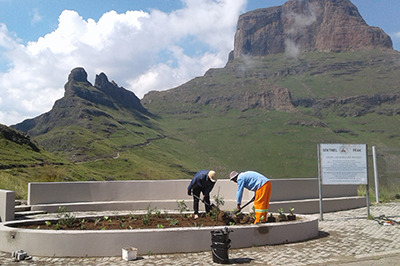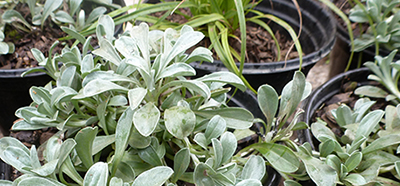

Local community members from the Batlokwa area
in Qwaqwa implementing the project in partnership
with the ARU.
Photos: Supplied
The Afromontane Research Unit (ARU) was recently requested by the Witsieshoek Mountain Lodge to assist with the landscaping of the recently upgraded Sentinel Car Park facilities. The Sentinel Car Park – at 2 500 m altitude – is one of the highest easy-access points to the Maloti-Drakensberg in South Africa. As a result, it is the launching place for many visitors (local and international) to access the high Drakensberg, especially to climb the heart-wrenching Chain Ladder and to see the second highest waterfall in the world – the Tugela Falls.
“The location of the Sentinel Car Park is sensitive, given that roads and infrastructure come with inherent biosecurity risks to sensitive mountain ecosystems, and that the site is located next to the uKhahlamba Drakensberg Park (Royal Natal section) and World Heritage Site; it is also located in the Batlokwa Community Conservation Area, which is part of the Maloti-Drakensberg Transfrontier Park,” said Dr Ralph Clark, Director: ARU.
Dr Clark emphasised that the landscaping project followed best practice guidelines, as indigenous plants were used.
“Plants suitable for the climate in this location have been used and will therefore have a higher probability of survival; the genetic integrity of species occurring naturally in the landscape around the Sentinel Car Park was maintained through the planting of local genetic stock; and climate change considerations, particularly increased temperatures over time at the project site, as well as increased drought frequency and intensity were taken into account, considering that the region has recently experienced persistent droughts and very delayed summer rains,” he said.
The project, funded by the Department of Environment, Forestry and Fisheries, used 21 plant species native to the Maloti-Drakensberg; planting stock was sourced from local nurseries in the Royal Natal and Golden Gate Highlands National Parks, and supplemented by material supplied by specialist Drakensberg grower, Nkosi Nursery. Local community members from the Batlokwa area in Qwaqwa participated in the design and implementation of the project.